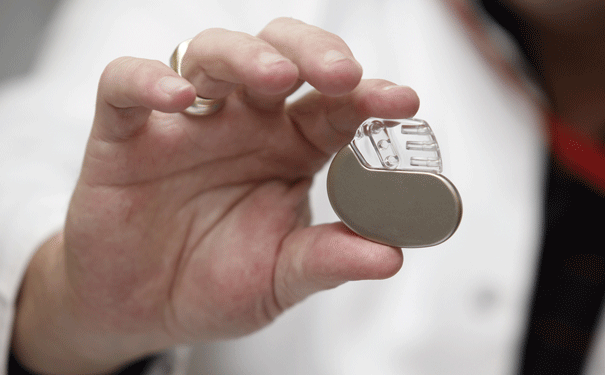Batteries in Implant Devices Can Be Recharged From Outside of the Body
Added by Sarah Takushi on May 27, 2014.
Saved under Health, Research, Sarah Takushi, Science, Study, Technology
Tags: batteries, top

Stanford University electrical engineers have invented a way to wirelessly recharge the batteries of medically implanted devices from outside the body. Such an invention removes a major impediment towards the use of medical implant devices, and has the potential to open up the field of “electroceuticals,” which would treat illness using electronic devices rather than drug-based therapies. Even current medical implant devices such as pacemakers and nerve stimulator devices could stand to be re-invented as the out-of-body recharging technology would allow bulky batteries to be miniaturized.
Medical implants that run off of electricity are becoming increasingly commonplace within modern medicine. Each year in the United States over 100,000 pacemakers are implanted as a treatment for cardiac arrhythmia. In addition to that, neurological conditions such as epilepsy may be treated with implants such as a vagus nerve stimulatory device (VNS device) which can be used to prevent seizures.
Currently, limited battery life remains a major impediment to the development of more advanced and widely applicable medical implant devices. In the case of pacemakers, when the battery runs out, a patient must go in for surgery to have the device replaced. Although such surgeries are routine and are considered minor operations, as with any invasive treatment, there are always associated risks such as infection, damage to internal organs, and/or the need for additional surgeries.
However, a team of engineers headed by Stanford University assistant professor Ada Poon has developed a way by which medical implant devices can have their batteries recharged from outside of a patient’s body. The new technology exploits the ways in which waves travel differently through different materials.
Modern technology generally uses two different kinds of electromagnetic waves. Those in the far-field range, such as radio waves, are used in communications technology. Though these waves can travel great distances, when they encounter biological material they either bounce off or are absorbed as heat. By contrast, near-field waves do not travel far, but are capable of wirelessly transferring power over those short distances. Poon and her team were able to generate an intermediate form of wave—called mid-field waves—designed specifically to predictably propagate within the mammalian body for power transfer. Consequently, the new recharging method is called “mid-field wireless transfer.”
Mid-field wireless transfer has allowed the large batteries of pacemakers and other devices to be miniaturized down to about the size of a grain of rice. After the medical implant is put into the patient, re-charging the battery is as simple as swiping a credit-card-sized power source above the device.
With the limiting factor of bulky batteries and inconvenience removed, Poon speculates that a new era of electronic-based pharmaceutical devices—electroceuticals—may be at hand. Potentially tiny devices to monitor vital functions, drug delivery systems, and neural stimulator devices could all be made to treat pain and alleviate illness. An advantage of electroceutical devices over traditional drug therapy approaches is the specificity with which such treatments could be employed. While drugs create global effects in the body, may times by way of nasty side effects, electroceuticals could be implanted at specific locations to stimulate exact regions at specified times and frequencies depending upon the needs of the patient.
So far, the wireless recharging system has successfully recharged implant devices in a pig and in a rabbit. Poon and her team are currently preparing to test in humans. If successful, it will still take several more years for the new out-of-body battery recharging technology to be incorporated into commercial medical devices.
By Sarah Takushi
Sources:

No comments:
Post a Comment